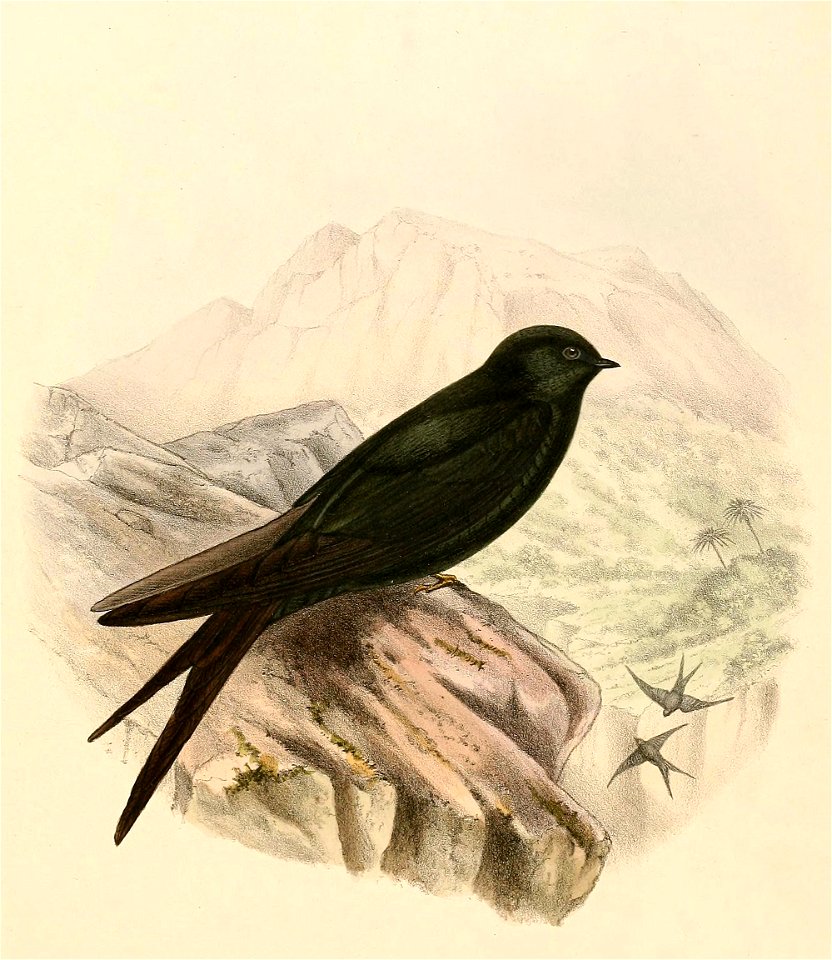The Olive Swallow: Psalidoprocne Oleaginea
Share
The Olive Swallow, scientifically known as Psalidoprocne oleaginea, is a fascinating bird species belonging to the family Hirundinidae. This article delves into the taxonomy, habitat, behavior, and conservation status of this unique bird, providing insights into its ecological role and tips for birdwatchers eager to observe it in its natural environment.

Taxonomy
The Olive Swallow is classified under the order Passeriformes, suborder Oscines, and subfamily Hirundininae. Within the genus Psalidoprocne, it is specifically identified as Psalidoprocne oleaginea. The species was first described by Neumann in 1904, with its type locality being Schubba in west Kafa, Ethiopia. The Olive Swallow is part of a diverse group of birds known for their aerial agility and social behavior.
Physical Characteristics
The Olive Swallow is characterized by its sleek body and long, pointed wings, which are adapted for swift flight. Its plumage is predominantly olive-green, providing excellent camouflage against the foliage of its habitat. The underparts are lighter, often with a subtle sheen that adds to its aesthetic appeal. Adult birds typically measure around 15-20 cm in length, with a wingspan that allows for impressive aerial maneuvers.

Habitat
The Olive Swallow is primarily found on the southwestern slopes of the Ethiopian Plateau. This region is characterized by a mix of montane forests and open grasslands, providing an ideal environment for foraging and nesting. The bird prefers areas with abundant insect life, as its diet mainly consists of flying insects, which it catches mid-air during flight.

Diet
As an insectivorous bird, the Olive Swallow plays a crucial role in controlling insect populations within its habitat. It primarily feeds on a variety of flying insects, including flies, beetles, and moths. The bird's foraging behavior involves agile flight patterns, allowing it to catch prey on the wing. This diet not only sustains the Olive Swallow but also contributes to the ecological balance of its environment.

Behavior
The Olive Swallow is known for its social behavior, often seen in small flocks, especially during the breeding season. These birds are highly vocal, using a range of calls to communicate with one another. Their aerial displays are a sight to behold, showcasing their agility and speed. During courtship, males perform elaborate flight patterns to attract females, demonstrating their fitness and vigor.
Reproduction
Breeding typically occurs during the rainy season when food is abundant. The Olive Swallow builds its nest in sheltered locations, often using mud and plant materials. The female usually lays 2-4 eggs, which both parents help incubate. After hatching, the chicks are fed a diet rich in insects, ensuring rapid growth and development. Fledging occurs within a few weeks, and young swallows are soon seen practicing their flight skills.
Conservation Status
Currently, the Olive Swallow is not considered endangered, but habitat loss due to deforestation and agricultural expansion poses a potential threat to its population. Conservation efforts aimed at preserving the montane forests of the Ethiopian Plateau are essential for maintaining the ecological balance and ensuring the survival of this species.
Birdwatching Tips
For birdwatchers interested in observing the Olive Swallow, the southwestern slopes of the Ethiopian Plateau are the best locations. Early mornings and late afternoons are ideal times for spotting these birds as they engage in foraging and social activities. Binoculars and a good field guide can enhance the experience, allowing enthusiasts to appreciate the Olive Swallow's beauty and behavior.
The Olive Swallow, with its striking appearance and vital ecological role, is a remarkable species that embodies the rich avian diversity of Ethiopia. Observing this bird in its natural habitat offers a unique glimpse into the intricate web of life that sustains our planet.